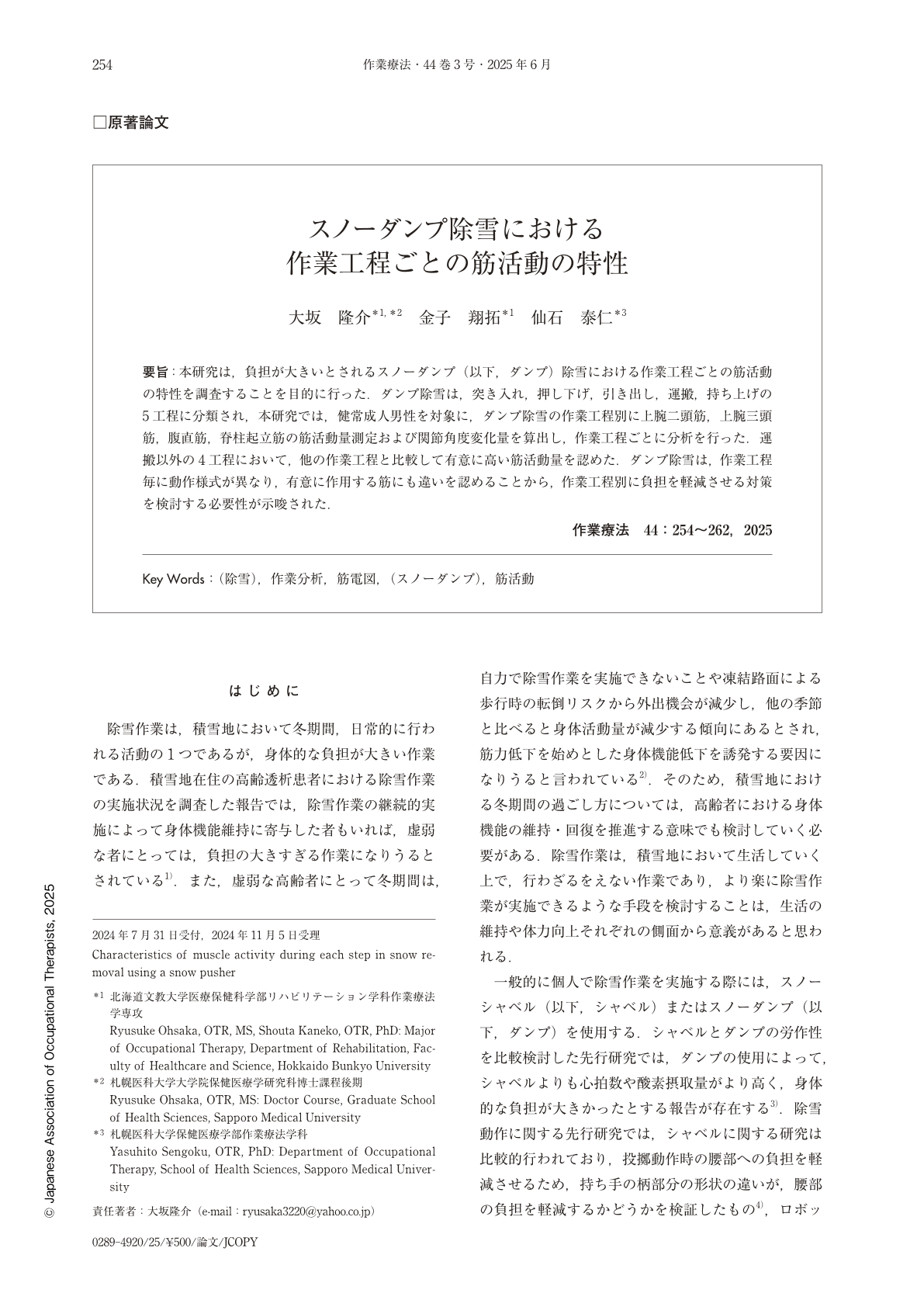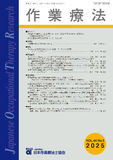Japanese
English
- 販売していません
- Abstract 文献概要
- 1ページ目 Look Inside
- 参考文献 Reference
要旨:本研究は,負担が大きいとされるスノーダンプ(以下,ダンプ)除雪における作業工程ごとの筋活動の特性を調査することを目的に行った.ダンプ除雪は,突き入れ,押し下げ,引き出し,運搬,持ち上げの5工程に分類され,本研究では,健常成人男性を対象に,ダンプ除雪の作業工程別に上腕二頭筋,上腕三頭筋,腹直筋,脊柱起立筋の筋活動量測定および関節角度変化量を算出し,作業工程ごとに分析を行った.運搬以外の4工程において,他の作業工程と比較して有意に高い筋活動量を認めた.ダンプ除雪は,作業工程毎に動作様式が異なり,有意に作用する筋にも違いを認めることから,作業工程別に負担を軽減させる対策を検討する必要性が示唆された.
The purpose of this study was to investigate the characteristics of muscle activity in the work process of snow removal using a snow pusher, which is burdensome. Snow pushing involves five steps: shoving, pushing down, pulling out, transporting, and lifting. Despite being a common task, there is little research on the ergonomics of snow removal using a pusher. This study evaluated muscle activity and joint angle changes in the biceps brachii, triceps brachii, rectus abdominis, and erector spinae muscles involved in each step of snow removal using a pusher in healthy adult men. Throughout the process, the electromyographic activity of each muscle fluctuated around 30%, which is within the desirable load for improving muscle endurance. Further evaluation using Welch's analysis of variance showed that shoving, pushing down, pulling out, and lifting involved significantly higher muscle activity than the other work processes. Because snow removal using a pusher requires different movement patterns and muscle activity for each step, necessary measures must be introduced to reduce the physical burden involved in each task.

Copyright © 2025, Japanese Association of Occupational Therapists. All rights reserved.


